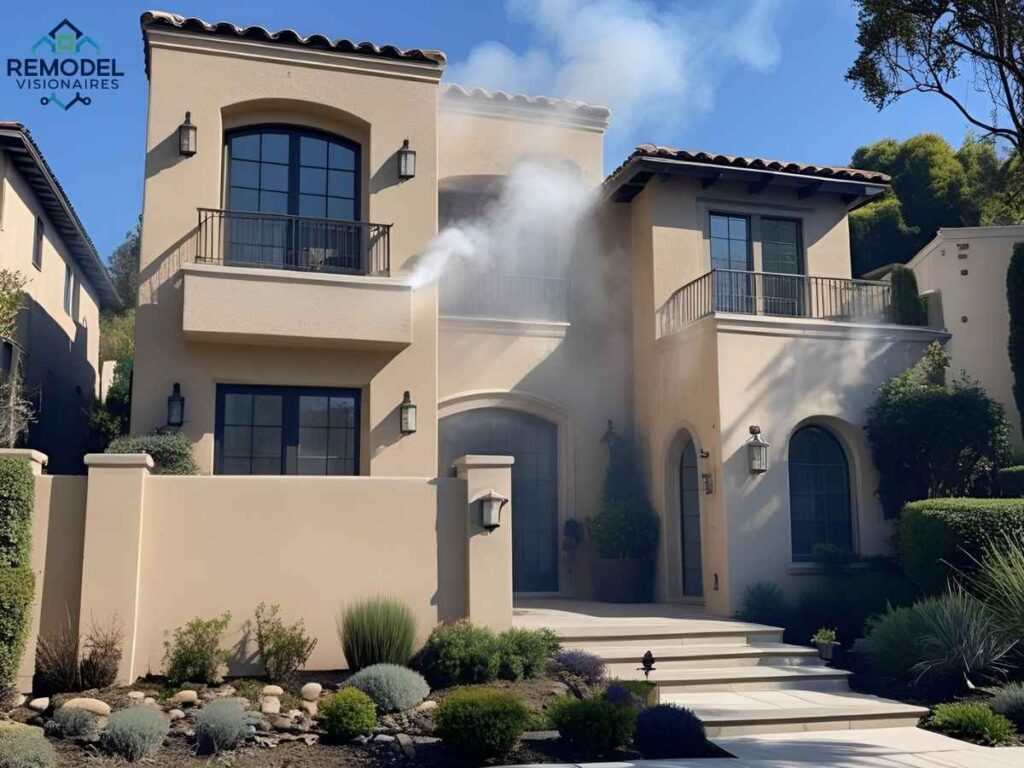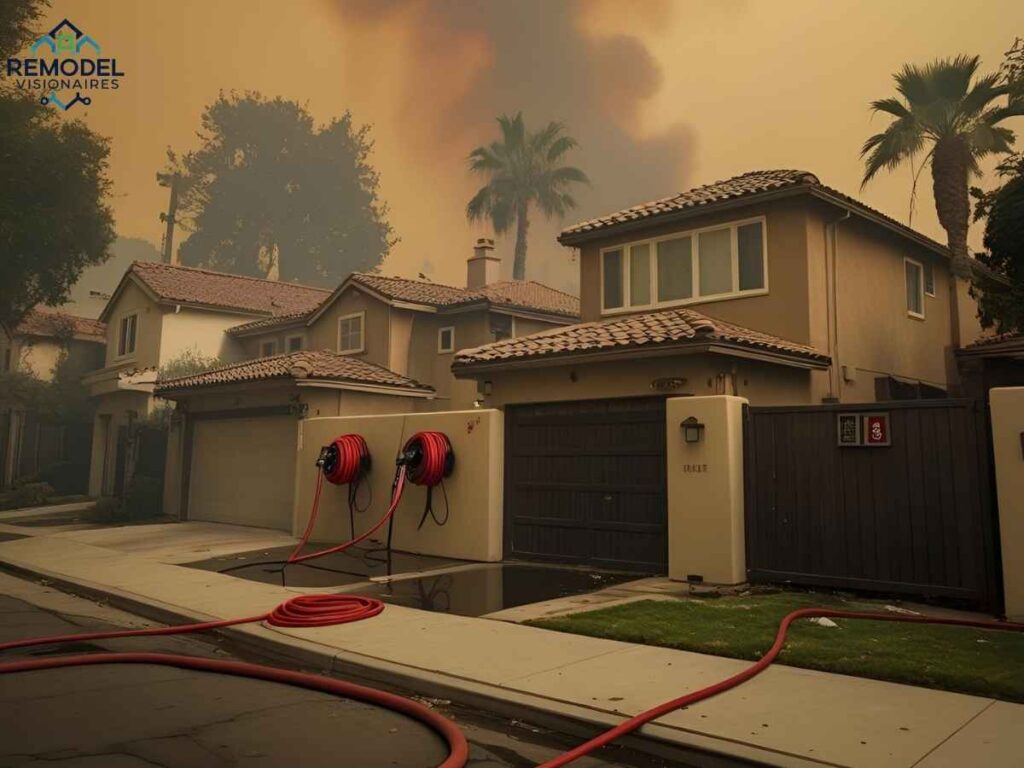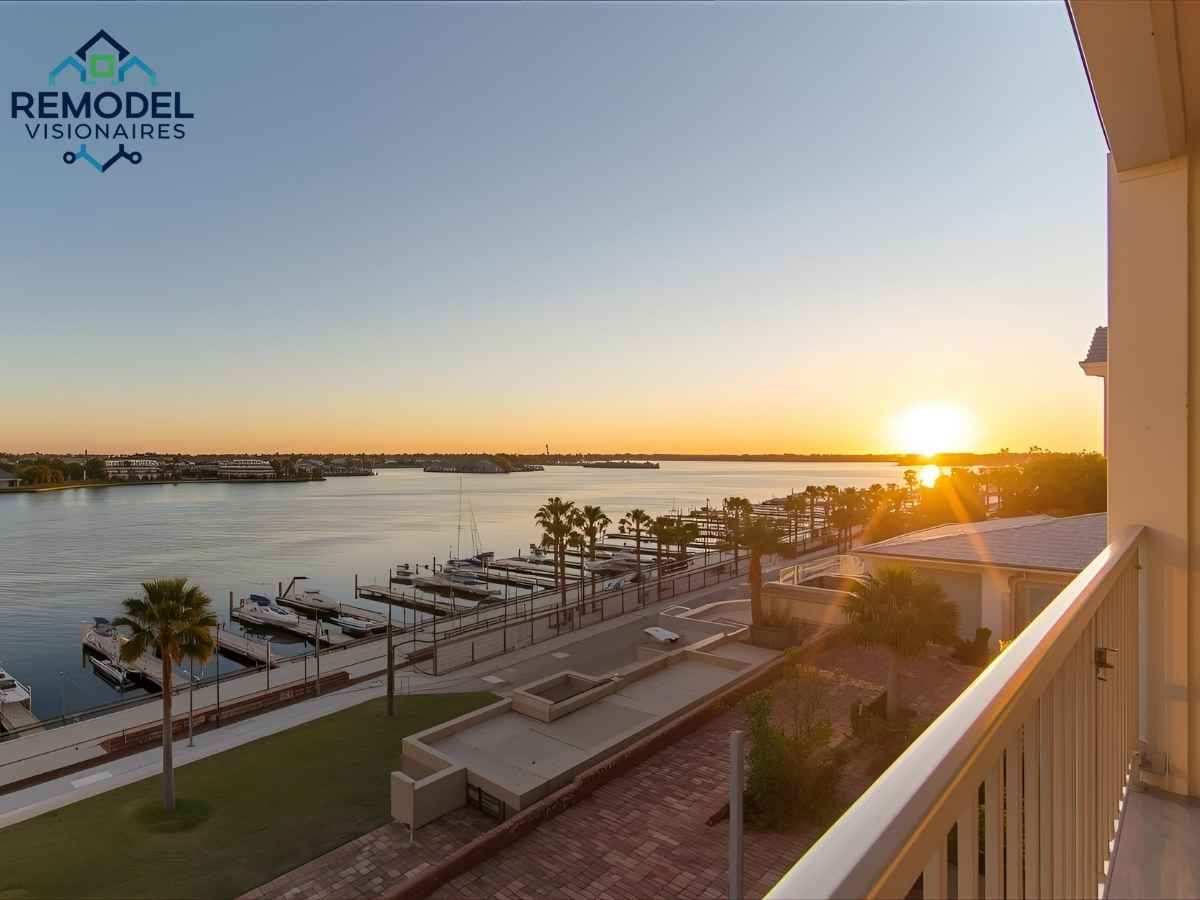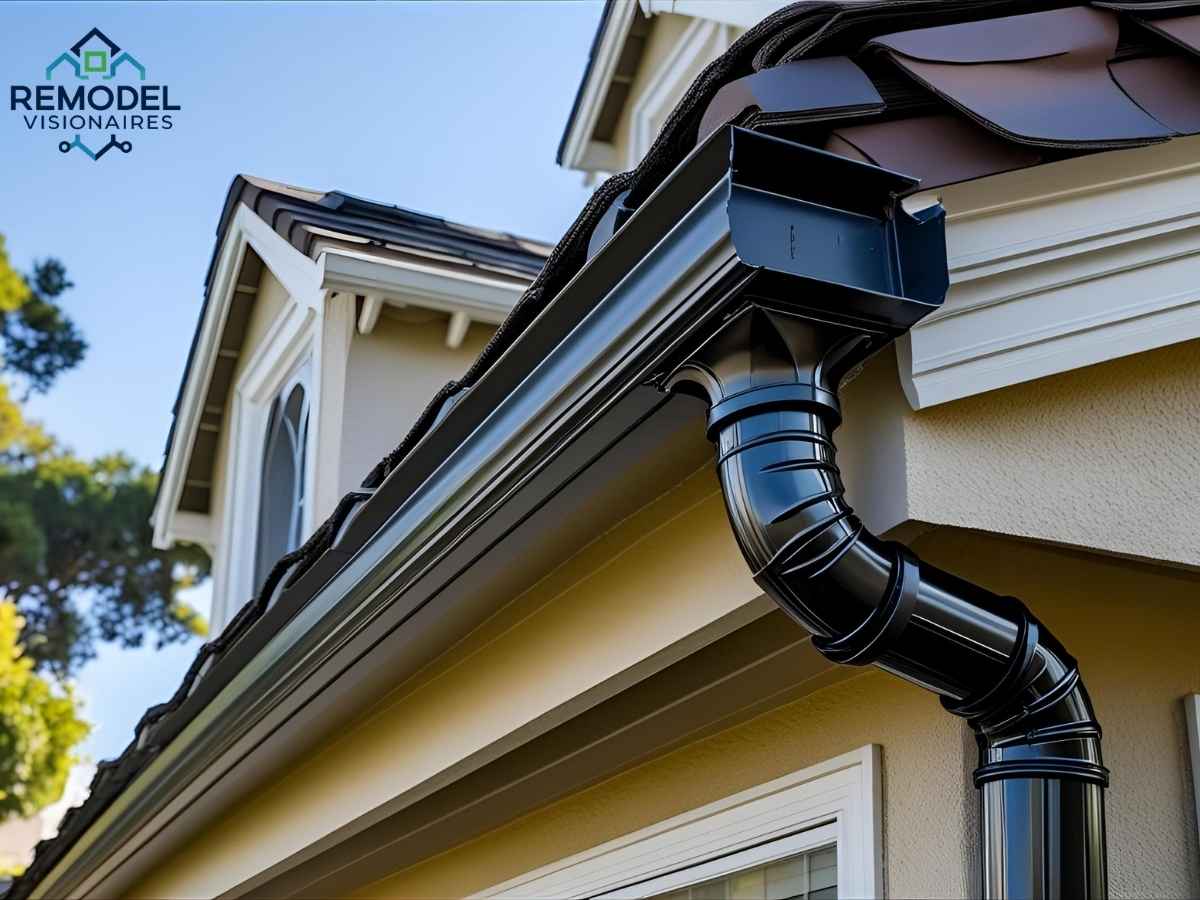It’s a quiet morning in Silver Lake. The sun, usually radiant by 7AM, glows distorted and orange behind a thick veil of smoke. Neighbors in 90039 check their weather apps and air quality maps before venturing outdoors. Across Los Angeles, from the coastal breeze of Santa Monica to the foothills of Altadena, the newest routine is less about watering lawns and more about minimizing wildfire smoke damage to home exteriors. As Southern Californians, adapting to wildfire season is part of daily life. But with each passing year, the stakes get higher—and the impact on our homes grows more severe.
Whether you live in Torrance, West Hills, or the historic core of Pasadena, wildfire smoke presents unique and urgent threats to your property. Protecting your home’s exterior is not just about preserving curb appeal; it’s about shielding your family’s sanctuary from toxins, corrosion, and long-term structural harm. Let’s explore the latest challenges facing Angelenos and discover actionable ways to protect our home exteriors from wildfire smoke in Los Angeles.
Table of Contents
Facing Los Angeles’ Wildfire Smoke: Local Risks and Realities
Wildfire smoke is no longer a distant mountain menace; it’s an LA-wide crisis that can affect homes as far as 30 miles from the actual fire. In January 2025, at least three separate wildfires cloaked the entire county in hazardous smoke, with Los Feliz, Santa Monica, and El Sereno all recording “unhealthy” air quality levels. This haze isn’t just unsightly—it carries dangerous toxins from burned plastics, paint, and construction materials, as homes, cars, and vegetation combust in the wildland-urban interface.

LA’s Climate and Fire Patterns
Our region’s Mediterranean climate, marked by hot, dry summers and powerful Santa Ana winds, creates perfect wildfire conditions. The diversity of architecture—Spanish bungalows, stucco mid-century homes, Craftsman classics—means that each structure faces its own unique vulnerabilities. For example:
- Historic homes with wood siding in Echo Park or Highland Park absorb more smoke and soot.
- Modern stucco exteriors in Playa Vista or Culver City may trap ash and corrosive particles in fine surface cracks.
- Homes near canyons or parks, like those in Pacific Palisades (90272) and Topanga (90290), encounter repeated smoke exposure, soiling every horizontal surface.
Health & Financial Impacts Beyond the Flames
Even blocks untouched by fire suffer from smoke incursions. The tiny particulates settle onto roofs, gutters, and siding, embedding toxic residues that can corrode finishes and penetrate building materials. According to recent LA studies, the financial toll often includes costly power washing, repainting, or even replacing compromised exterior components—an increasing concern amidst the city’s ongoing housing affordability crisis.
Comprehensive Solutions for LA Neighborhoods
So, what does wildfire smoke actually do to home exteriors? And how can Angelenos take effective action to minimize these hazards?
Know Your Home’s Weak Spots
Start with a detailed inspection, especially after a severe smoke event. Pay close attention to:
- Siding and walls (for smoke stains, sticky residues, and corrosion)
- Roof shingles and tiles (where ash and soot can degrade materials)
- Windowsills and frames (gaps let in particles that damage both exteriors and interiors)
- Gutters and downspouts (which gather ash and, when wet, form acidic slurries)
Build a Smoke Defense Checklist
Proactive steps can make all the difference. Here’s what local experts and resilience planners recommend to LA homeowners:
- Seal and Weatherproof
Re-caulk windows and doors. Seal siding joints, attic vents, and crawl spaces. Select weatherproofing products specifically rated for toxin and moisture resistance. - Upgrade Exteriors
Whenever possible, use Class A fire-rated materials for siding and roofing. Fiber-cement board, unpainted brick, and composite shingles all resist ash corrosion and fire better than untreated wood. - Install Exterior Sprinkler or Misting Systems
These systems, now common in LA’s high-risk zones, help knock down ash and particulate deposits before they settle. - Regularly Clean Surfaces
Use an N95 mask and gloves when removing settled smoke residue from walls and paved areas. - Maintain Landscaping Defenses
Trim flammable plants back at least 30 feet from your home. Keep lawns moist, and use gravel or stone borders as a buffer. - Professional Inspection and Remediation
After major smoke events, hire a certified smoke damage inspector to evaluate hard-to-reach areas and provide a tailored treatment plan.
Real Stories from Your LA Neighbors
Nothing illustrates the value of proactive protection like the lived experiences of actual Angelenos. Here are three local stories from recent wildfire seasons:
Santa Monica Canyon, 90402
Emily R., a homeowner near Amalfi Drive, noticed an acrid residue coating her white stucco walls after the January 2025 wildfires. Quick action meant calling in a specialist within 48 hours. After thorough cleaning, surface pH neutralization, and re-caulking of her window frames, Emily’s home not only looked restored but was protected from ongoing corrosion—a far better outcome than her neighbor, whose repairs cost triple after waiting two weeks.
Highland Park, 90042
The Gutierrez family occupies a classic Craftsman bungalow. Their biggest challenge? Smoke particles seeped into every exterior nook, especially their wooden trim and porch railings. Instead of replacing the wood, they worked with a local contractor to apply a smoke-neutralizing primer and durable exterior paint. Two years later, their porch still stands strong and beautiful—with only seasonal touch-ups required.
Encino Hills, 91316
After the Tarzana Pass Fire, Mark and his partner found their modern home’s glass and stucco surfaces stained by oily soot. Routine cleaning didn’t work. Turning to a local fire restoration firm, they invested in a scheduled exterior cleaning package, which included professional power washing and annual gutter maintenance. Not only has their home’s appearance been preserved, but the value has actually increased thanks to the preventive care.
Meet LA’s Top 3 Wildfire Smoke Home Exterior Service Providers
When it comes time to restore or protect your home, these local pros lead the way with exceptional service and deep LA expertise:
1. Safety Services Management
Website: safetyservicesmanagement.com
Specializing in post-wildfire cleaning and restoration, this trusted firm offers soot, ash, and debris removal for home exteriors across LA, including power washing, rooftop and window cleaning, and certified air duct cleaning. Their team frequently partners with local insurance companies and even handles hazardous material (lead/asbestos) testing for fire-impacted neighborhoods from Malibu to South Pasadena.
2. RJ Fire Sprinkler Systems, Inc.
Website: sprayanddefend.com
RJ Fire Sprinkler Systems designs and installs advanced exterior misting and fire suppression systems specifically for Southern California’s climate. Popular in Woodland Hills and Altadena, their state-of-the-art systems use roof- and eave-mounted nozzles to block smoke and embers, providing ongoing protection with remote monitoring options for added peace of mind.

3. HVAC Alliance Expert
Website: hvacallianceexpert.com
Many might overlook their HVAC as a smoke entry point. This local company’s team specializes in upgrading home HVAC filters, sealing ducts, and installing fire-resistant barriers for LA homes from Brentwood to Torrance. Their comprehensive approach reduces particle infiltration and helps maintain clean air both inside and just outside your home.
Essential Tools, Resources, and Links for Angelenos
No homeowner should face wildfire aftermath alone. Take advantage of these local tools and official sites:
- LADWP Wildfire Safety Hub: Stay updated on fire-related utility advisories, power shutoffs, and hardening incentives.
LADWP Wildfire Safety - LA County Public Health – Wildfire Resources: Guidance on air quality alerts, protective measures, and local assistance programs.
LA County Public Health Wildfire Guidance - CalFire – Ready for Wildfire: Comprehensive tips for home hardening, emergency plans, and exterior maintenance, tailored for California homeowners.
Ready for Wildfire | CalFire - South Coast AQMD: Real-time air quality maps and alerts, including smoke advisories for all of Los Angeles County.
South Coast AQMD Dashboard
Frequently Asked Questions (FAQ)
How can I tell if my home’s exterior has been damaged by wildfire smoke in Los Angeles?
Look for visible ash buildup, oily or sticky residues on siding or windows, corrosive etching on glass or metal surfaces, and unusual discoloration, especially after a significant smoke event or ashfall.
What home exterior materials are most resistant to wildfire smoke damage in LA?
Fiber-cement boards, brick, and fire-rated composite siding resist smoke absorption and corrosion. Metal roofing, stone patios, and sealed concrete also offer superior durability against ash and soot.
Can I clean wildfire smoke residues off my own home, or should I always call in a pro?
For minor surface buildup, wear an N95 mask and gloves and use a gentle, pH-neutral soap with soft brushes or rags. Avoid pressure washing fragile surfaces, and always consult a pro for heavy, oily, or sticky residues or visible staining.
Does homeowner’s insurance usually cover smoke and ash damage to exterior structures in Los Angeles?
Most policies include smoke damage, but read your policy carefully and document all damage soon after a fire. Contact your insurer directly for claims guidelines specific to your neighborhood.
Who do I call for real-time air quality alerts or emergency smoke warnings?
Keep South Coast AQMD and LA County Public Health bookmarked for up-to-date advisories, and sign up for emergency text/email alerts through your city’s official website.


